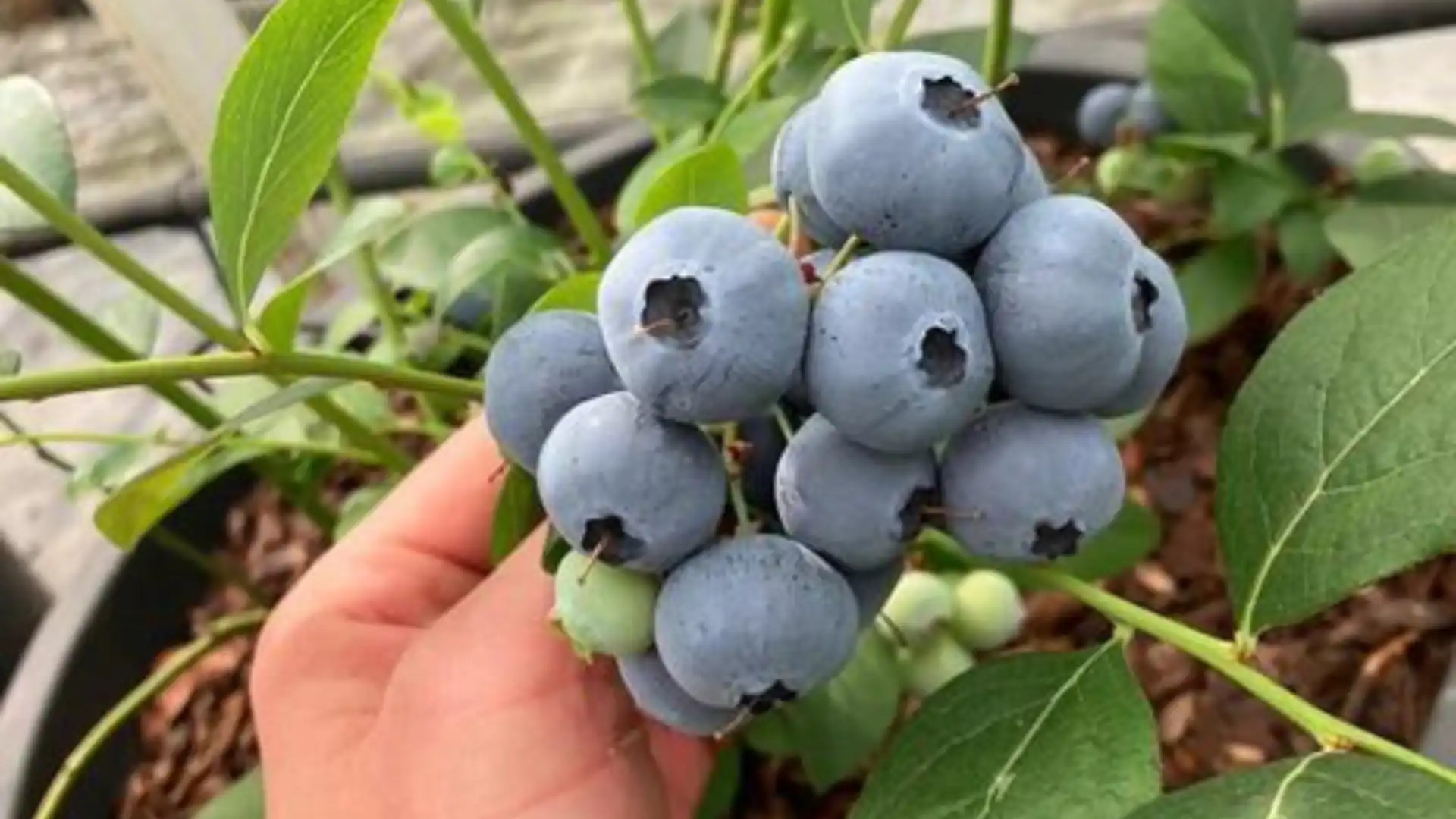The only small Italian fruit to enjoy institutional protection is a wild blueberry : it is the blueberry nero dell'Appennino Modenese.
The "Mirtillo nero dell'Appennino Modenese" (Bilberry of the Modena Apennines) protection label was created in 2011 by the Chamber of Commerce of Modena in cooperation with the LAG, the Alto Appennino Modenese Park and the Mountain Communities of the area.
TERRITORY
The term 'Bilberry of the Modena Apennines' refers exclusively to the Vaccinium myrtillus L. species, which grows wild in this territory and in the neighbouring municipalities, located in the high Apennines, in the provinces of Reggio Emilia, Bologna, Pistoia and Lucca.
PRODUCT FEATURES
The fruits are subspherical berries of about 6-8 mm of diameter, weighing 0,25-0,55 g, the outer part is bluish-black, covered by bloom, the colour of the pulp is bluish-red and dyeing, the taste is characteristic, agreeable, of sweet-sour type, slightly astringent.
Thanks to its countless properties, blueberry can be used not only in cooking but also in various other fields, such as phytocosmetics for the presence of organic acids, tannins and pectins in its berries, and in ophthalmology for its richness in anthocyanins.
COLLECTION
According to the product specification, 'the harvesting period must comply with the annual provisions of the orders of the competent authorities, depending on the weather and climate and the soil and altitude characteristics of the harvesting areas; the degree of ripeness of the fruit must be optimal for the product, organoleptic and biopharmacological qualities of blueberry and at the same time be compatible with transport, handling and storage operations, which must be carried out without damaging the integrity of the product. To determine the degree of ripeness of the fruit, spectrophotometric analysis can be used to assess the anthocyanin content and/or refractometric measurements to determine the sugar content.
Harvesting operations must be carried out with the aid of equipment ("combs") of a type permitted by current regional regulations and by the provisions of the competent authorities, or manually".
SELECTION
According to the specification, ' post-harvest interventions with chemical products are not permitted on the fruit. Given the delicacy of the fruit, any handling should be kept to a minimum. On the other hand, sorting and selection (from non-intact fruit, other 'blueberries', foreign plant material and foreign bodies) is appropriate and must be carried out before any freezing.
After harvesting, the product must be delivered to the sorting or processing or freezing centre as soon as possible and in any case no later than 12-14 hours; if this is not possible, the product should be kept in the refrigerator (+ 5°C) for no longer than 24 hours.
CONSERVATION
The specification states that 'the product may be marketed fresh or frozen. Black blueberry for the fresh market has a high perishability, so the post-harvest period is limited to a few days' storage.
Freezing (-20°/-25°C) appears to be the most suitable method of preserving blueberry, which can be kept in optimal conditions for very long periods (a year or more). Freezing will be done using the most suitable and up-to-date technology. It is advisable to carry out pre-cooling before freezing the product."
PACKAGING
According to the specification 'fresh fruit may be packed in PVC1 trays with a lid with a capacity of 125, 250 or 500g; for the sale of larger quantities of fresh product, PVC trays with a capacity of 1 kg or wooden or cardboard boxes of 2-3-5 kg may be used. The packaging must have a structure that allows the product to breathe.
All packages must have a lid or net and be appropriately marked and sealed. The product known as Mirtillo nero dell'Appennino modenese may not be sold loose.
As regards the frozen product, the fruit may be packaged in PVC trays with lids or in plastic bags (with a capacity of 2,5 kg) or in plastic paper bags (with a capacity of 20-25 kg). The packaging must also be marked and sealed.
LABELLING
The packaging must bear the following additional information on the label in clear and legible characters, in addition to the information corresponding to the legal requirements:
- the name Bilberry of the Modena Apennines;
- the name, company name, location of the packaging company;
- the collective brand logo below.
PROCESSED PRODUCTS
The products for which the trademark can be used are:
- extra jam from blueberry (minimum 45%)
- blueberries in syrup (40%)
- juice of blueberry (100%)
- blueberry syrup (minimum 35%)
- blueberry liqueur (minimum 25%)
- blueberry nectar (minimum 45%)
- compote of blueberry (minimum 70%)
OTHER USES
Some preparations based on blueberry are used, especially in confectionery, as sweeteners, flavourings and colourings: the latter use is becoming increasingly popular (also in the cosmetics and liqueur sectors) as the constituents of blueberry responsible for the colouring action, which are practically non-toxic, can advantageously replace certain synthetic colourings, despite their limited stability.
SEARCH
The black blueberry of the Modena Apennines has been the subject of in-depth studies, which began in the late 1970s, by the Research Group operating at the Department of Pharmaceutical Sciences of the University of Modena and Reggio Emilia. The research, carried out in collaboration with various bodies, has first of all highlighted the excellent quality of the Apennine blueberry , demonstrated by its high anthocyanin content, and has provided useful operational indications for the protection and enhancement of this spontaneous fruit, in relation to various factors including the time and criteria for harvesting and storage, the possible presence of other less valuable "spontaneousblueberries ", mapping of typical vaccine groves, and the influence of soil characteristics on the quality of blueberry.
OPERATORS
- FARM LA SELVA ARMONICADI NEGRONI GIAMPIERO
- CAPRICCI DEL BOSCO by Bettini Bruno
- Agricultural Forestry Cooperative L'ERBOLAIO
- DANTI GIAMPIERO & C. SNC
- Raemy Helen and C.'s RODI. Ssa
- THE BAGGIOLO of Milianti, Santi e C. Snc
- THE SORGENT of Ruggi Gianfranco
- THE SURGENT Wellness Factories of Ruggi Chiara and C.Snc
- ROBERTO MUZZARELLI
- PRO-MAR S.Michele di Contri & C.Snc
- SANT'ORSOLA Soc. Coop.Agricola c/o Az. Agr. Corsini Adeodato
Contact information is available on the CCIIAA website.
DISCIPLINARY
The product specification for the 'Mirtillo nero dell'Appennino Modenese' can be consulted on the website of the Modena Chamber of Commerce, which also has an in-depth page.
FANANO CITY OF BLUEBERRY
Every year in August, the town of Fanano hosts "Fanano Città del Mirtillo", the festival of the Black Bilberry of the Modena Apennines.











